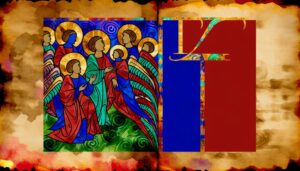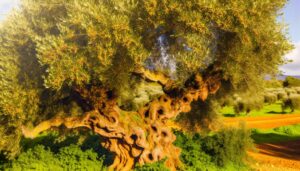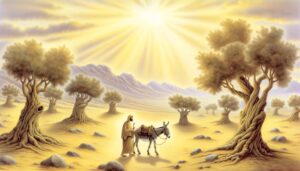Tree Meaning In The Bible: Life and Wisdom
Trees in the Bible carry deep symbolic meanings, embodying themes such as life, morality, and divine wisdom. The Tree of Knowledge in Genesis 2:9 signifies moral discernment and the consequences of free will.
Conversely, the Tree of Life symbolizes eternal life and divine provision, echoed in both Genesis 2:9 and Revelation 22:2. Parables employ trees to depict spiritual truths; for example, the fig tree represents Israel’s fruitfulness (Luke 13:6-9), while the mustard seed metaphor illustrates the Kingdom’s growth (Matthew 13:31-32).
Historical contexts enrich these symbols, revealing layers of interpretation and inviting further theological exploration.

Tree Meaning in the Bible: Life, Wisdom, and Divine Connection
| Symbolism | Biblical Reference | Spiritual Insight |
|---|---|---|
| Life and Sustenance | Genesis 2:9 | Trees in Eden symbolize God’s provision and the source of eternal life. |
| Wisdom and Righteousness | Proverbs 3:18 | The tree of life represents wisdom and those who live in harmony with God. |
| Spiritual Growth | Psalm 1:3 | The righteous are like trees planted by water, flourishing in all seasons. |
| Divine Connection | Revelation 22:2 | The tree of life reappears in heaven, signifying eternal unity with God. |
| Healing and Restoration | Ezekiel 47:12 | Trees bring healing and renewal, reflecting God’s power to restore creation. |
The Tree of Knowledge

The Tree of Knowledge, first mentioned in Genesis 2:9, stands as a profound symbol of moral discernment and the exercise of free will within the Judeo-Christian tradition.
Positioned in the Garden of Eden, this tree represents the boundary between innocence and the awareness of good and evil.
When Adam and Eve partook of its fruit, as narrated in Genesis 3:6, their eyes were opened, signifying the pivotal moment of human autonomy and the inherent consequences of choice.
Theologically, it underscores humanity’s capacity to discern and the inherent responsibilities tied to it.
Historically, the Tree of Knowledge has been interpreted as a metaphor for the complexities of ethical decision-making, a central theme that continues to resonate in Judeo-Christian ethics.
The Tree of Life

The Tree of Life, a central symbol within the biblical narrative, represents eternal life and divine wisdom, first mentioned in Genesis 2:9 and reappearing in Revelation 22:2.
Its significance is deeply rooted in the theological understanding of God’s provision and the ultimate restoration of creation.
Exploring these scriptural references reveals a profound connection between the beginning and the end of the biblical story, highlighting the enduring promise of salvation and renewal.
Symbolism and Significance
Among the myriad symbols within biblical literature, the Tree of Life stands as a profound emblem of eternal life and divine wisdom, deeply rooted in both the Genesis narrative and the eschatological visions of Revelation.
Its symbolism is multifaceted:
- Eternal Life: Representing the promise of immortality, as seen in Genesis 3:22.
- Divine Wisdom: Symbolizing God’s omniscience and the pursuit of spiritual enlightenment (Proverbs 3:18).
- Restoration: Emblematic of the ultimate renewal and restoration in Revelation 22:2.
- Connection: Acting as a nexus between heaven and earth, uniting the divine and human domains.
These aspects illustrate its theological significance, reflecting God’s overarching plan for humanity’s redemption and eternal communion with Him.
Biblical References Explained
Rooted deeply within the sacred texts, the Tree of Life‘s numerous biblical references reveal its profound theological and eschatological dimensions.
Genesis 2:9 introduces the Tree of Life in Eden, symbolizing divine provision and eternal life. This tree reappears in Revelation 22:2, where it signifies the ultimate restoration and healing of nations, emphasizing eschatological hope.
Proverbs 3:18 enriches its meaning, equating wisdom with the Tree of Life, suggesting a path to spiritual fulfillment. Historical interpretations often view it as a prefiguration of Christ, offering salvation and eternal life.
Consequently, the Tree of Life encapsulates a continuum from creation to consummation, threading through scripture as a symbol of divine sustenance, wisdom, and ultimate redemption.
Trees as Symbols
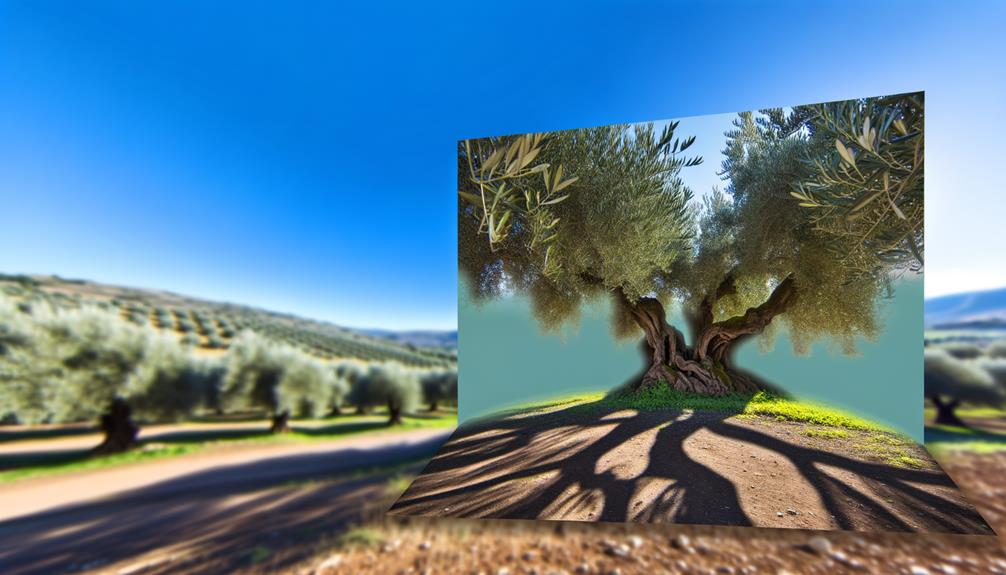
In biblical literature, trees frequently serve as powerful symbols representing life, wisdom, and divine provision, often illustrated through references such as the Tree of Life in Genesis and Revelation. These symbols are deeply rooted in theological insights and historical contexts:
- Tree of Life (Genesis 2:9, Revelation 22:2): Symbolizes eternal life and God’s provision.
- Tree of Knowledge of Good and Evil (Genesis 2:17): Represents moral discernment and the consequences of disobedience.
- Cedars of Lebanon (1 Kings 5:6): Signify strength and durability, used in constructing the Temple.
- Olive Tree (Romans 11:17-24): Illustrates the inclusion of Gentiles into God’s covenant people.
These trees encapsulate profound spiritual truths, demonstrating their enduring significance in biblical narratives.
Trees in Parables
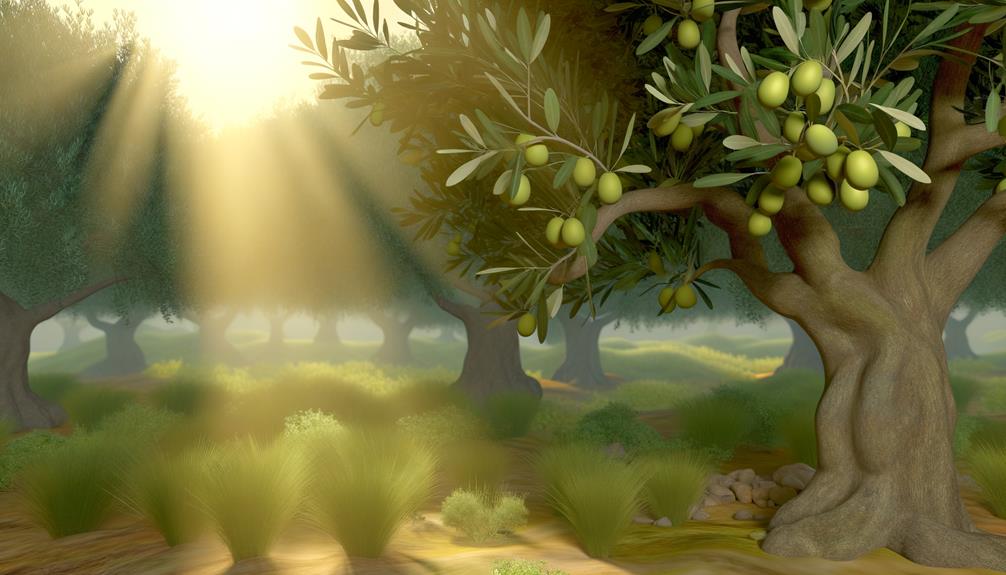
In the parables of Jesus, trees often carry profound theological implications, such as the fig tree symbolizing Israel’s spiritual fruitfulness (Luke 13:6-9) and the mustard seed illustrating the Kingdom of God’s expansive growth from small beginnings (Matthew 13:31-32).
These parables not only draw from the agrarian context familiar to Christ’s audience but also encapsulate broader biblical themes of judgment, hope, and divine sovereignty.
Analyzing these symbols within their scriptural and historical settings enriches our understanding of Jesus’ teachings and their enduring significance.
Symbolism of Fig Tree
The fig tree, frequently mentioned in biblical parables, serves as a profound symbol of Israel’s spiritual state and God’s expectations of fruitfulness. This symbolism is richly illustrated in various scriptural contexts:
- Mark 11:12-14 – Jesus curses a barren fig tree, symbolizing divine judgment upon unfruitfulness.
- Jeremiah 24 – Good and bad figs represent the faithful and unfaithful Israelites.
- Hosea 9:10 – God likens Israel to early figs, once delightful, now disappointing due to apostasy.
- Luke 13:6-9 – The parable of the barren fig tree underscores God’s patience and the call to repentance.
These references collectively underscore the fig tree’s theological significance, illustrating both divine expectations and the consequences of failing to meet them.
Mustard Seed Growth
While the fig tree serves as a potent symbol of spiritual fruitfulness, the mustard seed parable introduces a narrative of small beginnings leading to expansive growth within the Kingdom of God.
In Matthew 13:31-32, Jesus describes the mustard seed as the smallest of all seeds, yet when it grows, it becomes a tree where birds come to perch. This parable highlights the transformative power of faith and the Kingdom’s potential for immense impact from seemingly insignificant origins.
Historically, mustard plants were known for their rapid growth and pervasive spread, underscoring the message that even the smallest act of faith can yield profound, far-reaching results.
This theological insight invites believers to trust in the transformative power of divine providence.
Olive Tree Significance
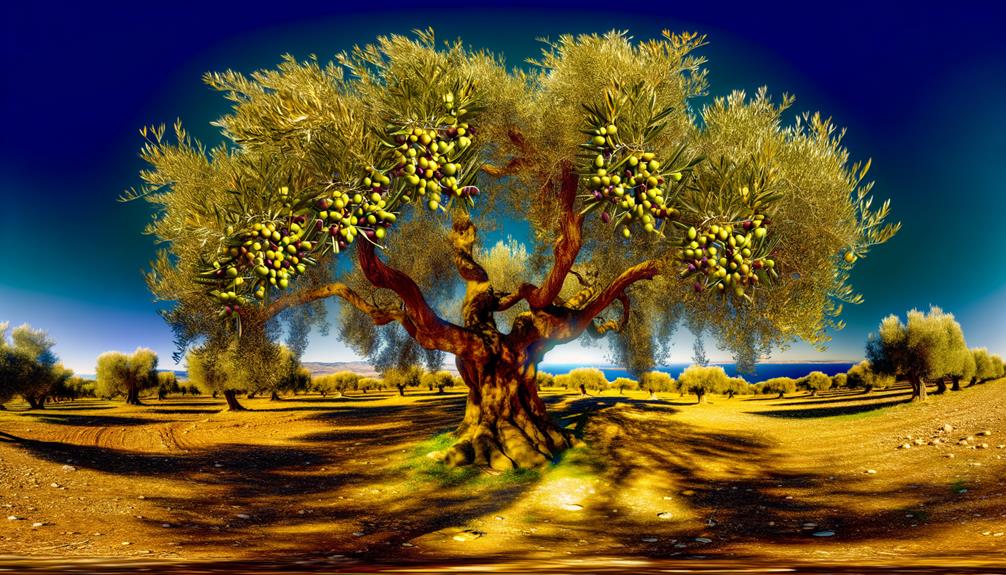
Revered for its enduring symbolism of peace, prosperity, and divine blessing, the olive tree holds a profound significance throughout the biblical narrative. Its presence is deeply embedded in scripture and culture:
Symbol of Peace: The olive branch, as seen in Genesis 8:11 where a dove brings back an olive leaf to Noah, signifies God’s covenant of peace with humanity.
Sign of Prosperity: Olive oil was used in anointing kings and priests (1 Samuel 16:13), symbolizing abundance and divine favor.
Representation of Faithfulness: Psalm 52:8 likens the faithful to a green olive tree in God’s house, denoting steadfastness.
Metaphor for Israel: Paul, in Romans 11:17-24, uses the olive tree as a powerful allegory for Israel and the inclusion of Gentiles into God’s covenant.
Cedar Trees in Scripture

Cedar trees, often mentioned in the Bible, symbolize strength, durability, and divine protection, reflecting their prominent role in ancient Near Eastern culture and religious practices.
In 1 Kings 6:9-10, Solomon’s Temple was constructed from the cedars of Lebanon, highlighting their significance in sacred architecture.
The cedar tree’s enduring quality is evident in Psalm 92:12, where the righteous are compared to the flourishing cedar.
Historically, cedar wood was prized for its resistance to decay and insects, making it ideal for building and ritual purposes.
Theologically, cedar trees represent God’s steadfastness and protection, as seen in Hosea 14:5-6, where God promises to be like the dew to Israel, causing them to grow like the cedar.
Fig Trees in the Bible

Fig trees hold profound theological significance in the Bible, symbolizing abundance, prosperity, and at times, judgment, as illustrated in passages such as Matthew 21:19 and Micah 4:4. The fig tree is often used as a metaphor to communicate deeper spiritual truths:
- Abundance and Prosperity: In 1 Kings 4:25, the fig tree signifies a time of peace and plenty during King Solomon’s reign.
- Judgment: Jesus cursing the barren fig tree in Matthew 21:19 reflects divine judgment against unfruitfulness.
- Security and Peace: Micah 4:4 portrays a future where every person sits under their own fig tree, symbolizing security and peace.
- Restoration: In Joel 2:22, the restoration of fig trees signals God’s renewal and blessings upon His people.
These examples provide rich theological insights into the symbolic use of fig trees.
The Vine and Branches
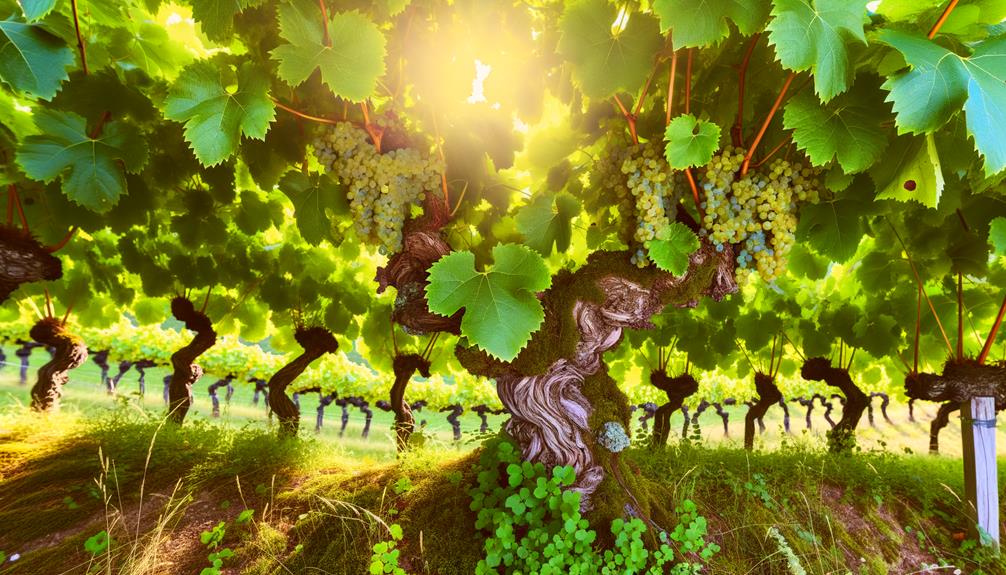
In the Gospel of John 15:5, Jesus declares, ‘I am the vine; you are the branches,’ using this botanical metaphor to illustrate the profound connection between Christ and His followers.
This imagery not only underscores the necessity of abiding in Christ for spiritual energy but also reflects the historical context of vineyards in ancient Israel, symbolizing growth and fruitfulness.
The vine and branches metaphor consequently encapsulates both the intimate relationship between believers and Christ and the imperative of spiritual growth and productivity.
Symbolism of the Vine
The symbolism of the vine and branches in the Bible is profoundly illustrated in John 15:1-5, where Jesus declares, ‘I am the true vine, and my Father is the gardener.’ This metaphor illuminates several key theological insights:
- Divine Relationship: The vine represents Jesus, the source of spiritual sustenance, while the branches symbolize believers who draw life from Him.
- Dependence: Just as branches cannot bear fruit apart from the vine, believers cannot achieve spiritual fruitfulness without abiding in Christ.
- Pruning: The gardener’s role entails pruning, signifying God’s discipline to foster growth and remove unfruitful elements.
- Unity: This image highlights the interconnectedness of believers through Christ, emphasizing communal growth and support.
Understanding these elements enriches one’s grasp of biblical teachings on dependence and divine care.
Spiritual Growth Metaphor
Rooted in the rich imagery of the vine and branches, the metaphor serves as a profound illustration of spiritual growth and connectivity within the Christian faith. This symbolism, drawn from John 15:1-8, highlights the essential unity between Christ (the vine) and His followers (the branches).
The historical context of viticulture in ancient Israel underscores the importance of a healthy, abiding connection for bearing fruit. Theologically, this metaphor encapsulates the transformative process of sanctification, wherein believers grow in grace and spiritual maturity.
The significance of the branches depends entirely on their attachment to the vine, signifying dependence on Christ for spiritual nourishment and fruitful living. This vivid imagery continues to inspire and guide Christian spiritual practices today.
Abiding in Christ
Abiding in Christ, as depicted in John 15:4-5, emphasizes the essential union between believers and Jesus, underscoring the necessity of remaining in Him to bear spiritual fruit. This metaphor of the vine and branches illustrates several key principles:
- Dependence: Just as branches rely on the vine for sustenance, believers must depend on Christ for spiritual nourishment (John 15:5).
- Connection: Historical context shows that ancient viticulture required close attention, symbolizing the intimate relationship between Jesus and His followers.
- Fruitfulness: Scriptural references highlight that abiding in Christ leads to a fruitful life, manifesting virtues like love and patience (Galatians 5:22-23).
- Pruning: God’s role as the vinedresser involves pruning, which signifies divine discipline and growth (John 15:2).
Trees and Righteousness
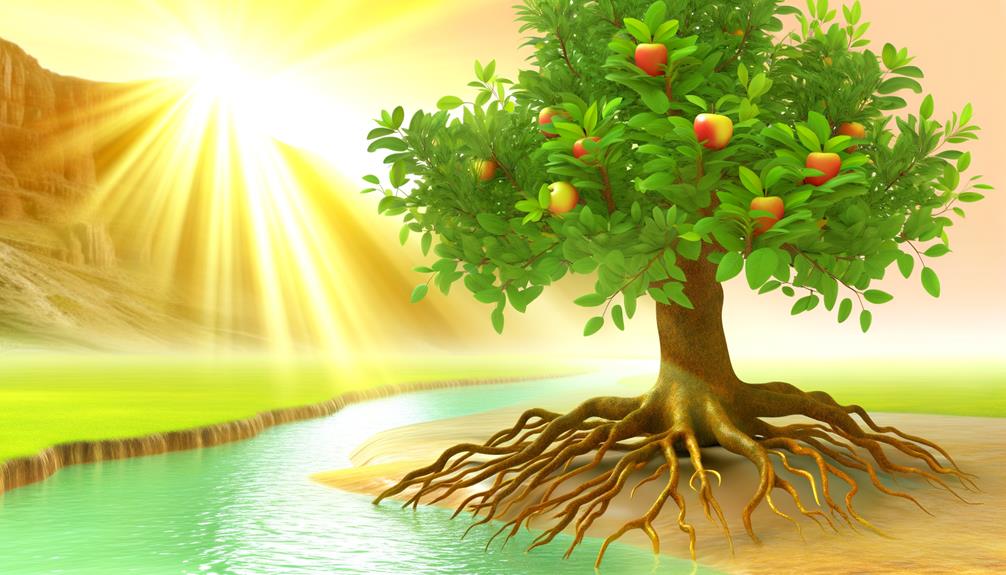
In biblical literature, trees often symbolize the flourishing of righteousness, as seen in Psalm 1:3 where the righteous are likened to a tree planted by streams of water, yielding fruit in its season. This imagery evokes a sense of stability, nourishment, and prosperity granted by divine favor.
Historically, trees have represented life and sustenance in ancient Israelite culture, tying physical well-being to spiritual faithfulness. Jeremiah 17:7-8 reiterates this metaphor, contrasting the fruitful tree of the righteous with the barren shrub of the wicked.
The theological insight here suggests that righteousness, akin to a well-nourished tree, is deeply rooted in God’s provision and is visible through fruitful deeds. Consequently, trees encapsulate the essence of living in alignment with divine precepts.
Trees in Prophecy
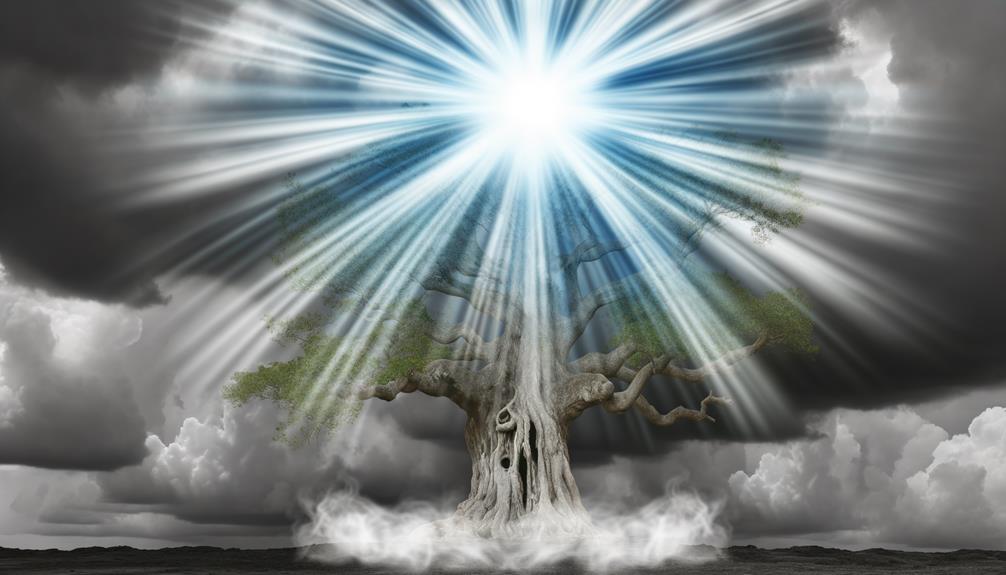
Biblical prophecy frequently employs the imagery of trees to convey divine judgment and restoration, as exemplified in passages such as Ezekiel 17 and Isaiah 61:3. Trees serve as powerful symbols within prophetic literature, illustrating the consequences of disobedience and the promise of renewal.
- Ezekiel 17: The cedar tree represents Israel’s monarchy, highlighting themes of downfall and eventual restoration.
- Isaiah 61:3: Oaks of righteousness symbolize the transformed lives of those who follow God’s will.
- Daniel 4: Nebuchadnezzar’s dream of a great tree being cut down signifies the humbling of earthly powers by divine authority.
- Zechariah 4:3: The olive trees beside the lampstand represent God’s anointed ones, indicating divine support and illumination.
These prophetic uses of trees underscore the interplay between divine judgment and the hope of redemption.
Conclusion
The multifaceted symbolism of trees in the Bible, encompassing the Tree of Knowledge, the Tree of Life, and various other arboreal references, underscores their integral role in theological narratives and spiritual teachings.
These trees serve as powerful metaphors for wisdom, immortality, and the intertwined nature of sin and salvation. One notable example is the almond tree symbolism in scripture, which signifies alertness and divine promise, as seen in the visions of Jeremiah.
Each reference to trees not only enriches the biblical text but also invites readers to reflect on their spiritual journeys and the lessons derived from nature.
The olive and fig trees, alongside the vine and branches metaphor, exemplify divine providence and human righteousness.
Coincidentally, trees also feature prominently in prophetic visions, further solidifying their significance.
This intricate tapestry of arboreal imagery reflects divine intentionality and profound spiritual truths within biblical literature.


